Gentle Reader,
When Mike came back from his visit with the oncologist, he said the doctor told him diet has nothing to do with cancer. Because I want to support Mike as he faces an arduous two-month treatment for Squamous Cell carcinoma of the tongue, I said nothing to contradict his doctor’s reassuring words. On the eve of treatment is no time to be guilting him for the processed foods, conventional red meats, and vegetables he has consumed for 59 years. He will be too miserable to work and so, by mutual agreement, he sublet his beautiful space in my downstairs to a friend and moved in with his sister. She will get him to his daily appointments for radiation and look after him when he is sick from the chemotherapy infusions. We are all hoping and praying that he will be cancer free and able to work again in three months. I will hold his space for him in solidarity with his winning the fight.
His doctor’s comment sent me to Google. What do we know about diet and Cancer? Here’s what I learned.
A healthy diet can reduce the risk of cancer
Information from Cancer Research UK.
People with less healthy diets are more likely to develop cancer. Many studies have been conducted looking at the association between diet and cancer, and experts agree the food we eat can affect our risk of cancer.
Scientists have estimated that less healthy diets cause nearly one in ten (9%) cancer cases in the UK.
But diet is difficult to study…
It is probable that no specific food causes cancer. But the possibility of proving cause and effect from specific foods is difficult. Our diets include many different foods, and those foods consist of many different nutrients and chemicals that could affect the risk of cancer. It is very difficult to design studies that can accurately look at the effect of a single food item.
The way food intake is measured can be problematic too. Many studies use ‘food-frequency questionnaires’ which ask participants how often and how much they have eaten particular foods over a period of time. But this relies on participants accurately remembering their past food intake. Better-quality studies use ‘daily food diaries’ for participants to record what they’ve eaten each day.
Also, it is very difficult to design diet studies that can accurately take account of other lifestyle factors which are very important in cancer risk, such as smoking tobacco and drinking alcohol. For example, people who drink or smoke heavily usually also have lower intake of fruit and vegetables. So when we see higher cancer risks in those people, it might be hard to disentangle the effects of one from the others.
Some aspects of our diet are linked to cancer according to the current scientific evidence. Only foods which are supported by a body of good-quality evidence are included here. For the many other foods which have been studied, the current evidence is not good enough to say whether there is a link.
This report suggests that some foods may reduce cancer risk. We have read this in magazines, newspapers, on the web ad nauseam. It might be a good idea to refresh our memories.
Fruit and vegetables may reduce the risk of many cancers
Research has suggested that eating lots of fruit and vegetables could reduce the risk of mouth, esophageal, bowel, throat, lung and some types of stomach cancers 1,3,7,9,.
Some studies have found that people who eat the most fruit and vegetables can lower their risk of cancer by around 10% compared to those who eat the least 1.10.11. Eating one portion of fruit and/or veg each day can cut the risk of mouth cancer by half – and eating more portions cuts the risk by even more 12.13.14.17.
A recent study suggested around one in 20 cancers in the UK may be linked to people eating fewer than five portions a day of fruit and vegetables 3. More than half of all mouth cancer cases, and almost half of esophageal and laryngeal cancers, are linked to diets low in fruit and vegetables 3.
In the UK, most of us do not meet recommended levels of fruit and vegetables in the diet 15.
This is true in the US as well.
Fruits and vegetables contain nutrients that could help protect against cancer
Fruits and vegetables contain a wide variety of different nutrients with properties that could make it more difficult for cancer to develop. These nutrients include carotenoids, folate, vitamin C, vitamin E, selenium, flavonoids and various other phytochemicals (chemicals found in plants).
Some of their properties include the following 1:
• Carotenoids act as antioxidants. Antioxidants block other chemicals known as free radicals. Free radicals are highly reactive and have the potential to cause damage to cells, including damage that may lead to cancer.
• Folate plays a vital role in DNA repair.
• Vitamin C and E act as antioxidants, protect DNA from damage and stimulate the immune system.
• Small levels of selenium play an essential role as part of certain proteins which have antioxidant and anti-inflammatory properties, as well as protecting against DNA damage.
• Flavonoids could also have antioxidant properties and reduce inflammation.
Fruit and vegetables are a good source of vitamins, minerals, and fibre
Fruit and vegetables contain a wide range of nutrients. Researchers are still trying to work out which of these might reduce cancer risk.
But it may be that you need these nutrients in balanced combinations to reduce the risk of cancer effectively 16. Differently coloured fruit and vegetables often contain different nutrients so it’s a good idea to eat a wide range of colours 17. One study found that people who eat the widest range of fruit and vegetables have 22% lower risk of mouth cancer than those who eat the narrowest range 18.
There is strong evidence that the nutrients in fruit and vegetables do not reduce the risk of cancer when they are taken as supplements. High doses of supplements could even have harmful effects 19, 20, 21.
Supplements have a bad rap because of the unregulated nature and non-standardized doses. You have to know how the supplements are sourced, processed, manufactured and what methods the company uses for testing at every step. Only then can you trust the health-giving benefit as opposed to food itself. I trust Shaklee. See the Shaklee difference here.
Fruit and vegetables are also a very good source of natural fibre, and there is strong evidence that high levels of fibre reduce risk of bowel cancer 7, 22, 23.
Fruit and vegetables have wide health benefits
People have been advised to increase their consumption of fruit and vegetables since the 1990s 24. Since then, many expert reports on diet and cancer prevention have supported eating five portions of fruit and vegetables a day 1, 25, 26. In 2005, the Department of Health made a concerted effort to promote their 5-a-day programme 27.
Eating plenty of fruit and vegetables can help you maintain a healthy body weight 2. Keeping a healthy weight can help you reduce the risk of bowel, breast (postmenopausal), kidney, womb, esophageal, pancreatic and gall bladder cancers 3. And getting enough fruit and vegetables can also reduce the risk of other diseases including heart disease 28. The EPIC study found that people who ate the most fruit and vegetables reduced their risk of dying from chronic diseases like heart diseases, cancer and diabetes by a quarter 29.
UK cancer research agrees that there is evidence to support increase in risk of cancer from red and processed meats. New information to me is what exactly in the meat could be cancer causing.
First, the type of meat that may cause cancer. We eat them in the US, too.
Eating lots of red or processed meat can increase the risk of cancer
Eating lots of red or processed meat increases the risk of bowel cancer 30, 31, 32. Red meat includes all fresh, minced and frozen beef, pork and lamb. Processed meat includes ham, bacon, salami and sausages 1.
Around a quarter of bowel cancer cases in men, and around a sixth in women, are linked to eating red or processed meat 33. Bowel cancer risk increases by more than a quarter (28%) for every 120g of red meat eaten per day, and by almost a tenth (9%) for every 30g of processed meat eaten per day 34. Processed meat is more strongly linked to cancer risk than red meat 30, 34.
There is growing evidence that links red meat to pancreatic cancer and stomach cancer 35, 36, 37, 38, 39. The EPIC study found that eating lots of meat, particularly red and processed meat could also increase the risk of stomach cancer – people eating over 100g of meat a day had over 3 times the risk of getting stomach cancer 39. Another very large study found that people who eat the most red or processed meat have 40-50% higher risk of pancreatic cancer 40.
There is no strong evidence that eating white meat, such as chicken, can increase cancer risk 34.
In the UK, we get a fairly high proportion of our energy intake from red and processed meats 15. The Government advises that people who eat more than 90g (cooked weight) of red and processed meat a day should cut down to 70g or less 41.
Researchers are beginning to isolate the link between red or processed meat and cancer. Chemicals found in these meats may play a part.
Red and processed meat contains chemicals that could cause cancer:
Haem
Red and processed meat contains a red pigment called haem. Haem could irritate or damage the cells in the bowel. The cells divide much more than normal to compensate for this damage. This increases the chance that one of these cells could acquire changes that set it down the road to cancer 42. There is some evidence that the effects of haem could be countered by chlorophyll, found in green vegetables 43, 44.
Haem could stimulate the bacteria in our guts to produce chemicals called N-nitroso compounds, or NOCs 45. Many of these are known to cause cancer. Almost all red and processed meats contain more haem than white meats. This may explain why red and processed meats increase bowel cancer risk while white meats do not 45.
Nitrites, nitrates and N-nitroso compounds
Nitrites and nitrates are used to preserve processed meat and may explain why some studies find that processed meat increases the risk of cancer to a greater extent than red meat 30, 46. In the bowel, nitrites are converted into N-nitroso compounds, which could cause cancer 46. One group of scientists analysed over 60 studies and found that nitrites, and foods rich in them, are linked to higher risks of stomach cancer 47.
Heterocyclic amines & polycyclic aromatic hydrocarbons
How meat is cooked may produce harmful chemicals: heterocyclic amines (HCAs) and polycyclic aromatic hydrocarbons (PAHs), many of which can cause cancer 48, 49. The presence of these chemicals may explain why some studies find that meat cooked at high temperatures such as grilling or barbequing might increase the risk of bowel cancer more than meats cooked at lower temperatures such as boiling or braising 50, 51.
Shift to fish and chicken.
Eating lots of fish may lower the risk of bowel cancer
The EPIC study recently reported that people who ate an 80g portion of fish a day reduced their bowel cancer risk by a third compared to people who ate less than that in a week 52. Some other studies have shown similar results, but the evidence is still inconsistent 53.
It is not clear how eating fish could reduce the risk of cancer. Fish oils are especially rich in polyunsaturated omega-3 fatty acids (O3FAs), but there is no strong evidence that these can reduce the risk of cancer 54.
In the UK, our fish consumption is well below Government recommended levels of at least two portions of fish a week 15.
Eating lots of fibre can reduce the risk of bowel cancer
A recent study found more than one in ten (12%) bowel cancers are linked to a low fibre diet 3. A review of all studies on the topic has shown eating 10g of fibre per day can reduce the risk of bowel cancer by around 10% 55. Cereal fibre and whole grains seem to have the most effect on reducing bowel cancer risk 7.
In the UK, our average fibre intake is below the recommended level 15.
Fibre triggers the production of helpful chemicals, and increases the frequency of bowel movements.
Bacteria in the bowel interact with fibre to produce several chemicals including butyrate. Butyrate changes the conditions in the bowel, so that tumours are less likely to develop. Lab experiments have shown that butyrate can also stop the growth of cancer cells and cause them to die 56, 57, 58.
Fibre dilutes the contents of stools, and increases their bulk and the frequency of bowel movements8, 9. All of this reduces the contact time between the bowel and chemicals in the stools and could reduce the amount of cancer-causing chemicals that are absorbed through the lining of the gut.
Fiber is an interesting problem area. I actually did a food diary specifically designed to measure my fiber intake. I suffered from chronic constipation as a young adult. My own research (before Google) about the causes of cancer indicated that a clogged up colon, sluggish bowl movements were a big drag on the immune system function. Most (75%) of our immune response sites are in the lower intestine. If the immune function is taken up with handling the toxins present in un-moved bowel, there is precious little left over for the rest of the body. In my diary records, I was consuming about 15 grams of fiber a day from food. I have been supplementing with Shaklee fiber ever since, taking 2-3 Fiber Tablets with every meal. Those plus more than five servings of vegetables every day keep my bowel movements regular and the consistency of a very ripe banana. More information than you wanted, but I can tell you, that you would do well to get to the same place with your elimination to lower your risk of cancer.
Eating lots of salt can increase the risk of stomach cancer
There is some evidence that eating too much salty food, or food that has been preserved with salt, could increase the risk of stomach cancer. But most evidence comes from countries with higher salt consumption than the UK, like Japan 59.
In the UK, it’s thought that nearly a quarter (25%) of stomach cancer cases are linked to eating more than 6g of salt each day 3. A review which combined the results of all relevant studies showed that people who regularly eat high amounts of salt each day have two-thirds higher risk of stomach cancer compared with those who eat low amounts 59.
Too much salt can increase blood pressure and the risk of heart disease and stroke 60.
Salt could affect the risk of stomach cancer by damaging the lining of the stomach and causing inflammation, or by making the stomach lining more sensitive to carcinogens such as nitrates. Salt could also interact with a stomach bug called Helicobacter pylori that cause both stomach ulcers and stomach cancer 61.
In the UK, we typically eat much more than the recommended 6g of salt per day 15.
Eating lots of saturated fat may increase the risk of breast cancer
Most studies on fat intake and the risk of breast cancer have suggested either no link or a small increased risk of the disease. Most studies that have found a small increased risk of breast cancer showed links with the intake of total fat or saturated fat 62, 63, 64. An analysis of four UK studies found no association between fat intake and breast cancer risk in middle-aged women 65.
Altogether, it is still not clear whether fat intake affects the risk of breast cancer. But if there is an effect, it is probably because fat in our diets increases the levels of oestrogen and other hormones in our blood, which fuels the development of cancer 66.
Are you still with me? One of the foremost cancer research facilities in the US is MD Anderson, in Austin, TX. My daughter and I are part of one of their studies. We both have a DNA variant which is showing up in families who may have one or more of three cancers: melanoma, brain and breast. I have had early breast cancer. Ruth has had early breast and melanoma cancers. I went to their site to see what they had to say about food and cancer. Here is a checklist you can download and carry in your purse, pocket to the grocery store. Maybe it will help you increase the foods that may fight cancer and reduce your risk.
Be well, do well and keep moving.
Betsy
206 933 1889
I love to read your comments so keep them coming.
To shop for Shaklee products, go to www.HIHoHealth.com

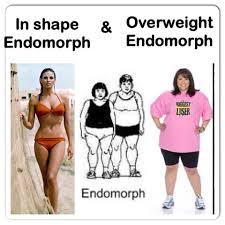
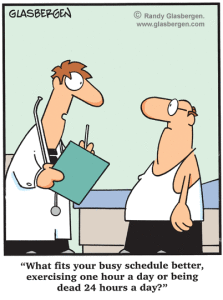 genetically tested for obesity genes, I’m sure I would have a handful of the 32, maybe even the dreaded 21 that put women over the edge. I feel as though I am an “over-weight-in-remission” person. To change my body into the relatively lean one I live in today, I had to go after an unhealthy sugar addiction but cutting out all sugar including grapes (forever mostly) and all other fruit for a period of time. I was rigid for years about white flour and sugar. I’ve been able to relax, but continue to avoid refined flour, sugary snacks, baked goods and I limit my fruit intake. I have always eased myself out the door to exercise, even when the book/computer/bed held me back.
genetically tested for obesity genes, I’m sure I would have a handful of the 32, maybe even the dreaded 21 that put women over the edge. I feel as though I am an “over-weight-in-remission” person. To change my body into the relatively lean one I live in today, I had to go after an unhealthy sugar addiction but cutting out all sugar including grapes (forever mostly) and all other fruit for a period of time. I was rigid for years about white flour and sugar. I’ve been able to relax, but continue to avoid refined flour, sugary snacks, baked goods and I limit my fruit intake. I have always eased myself out the door to exercise, even when the book/computer/bed held me back.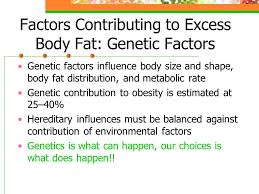

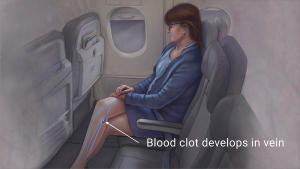

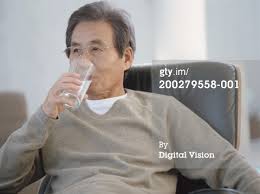
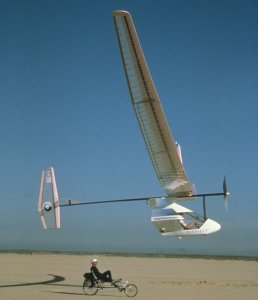
 I am in the middle of what they call splits: controlled small movements monitored for form, lasting until the muscles in use fatigue completely, about 4 1/2 minutes. Efficient and not damaging to joints. Can you see that it’s 25 lbs in each hand?
I am in the middle of what they call splits: controlled small movements monitored for form, lasting until the muscles in use fatigue completely, about 4 1/2 minutes. Efficient and not damaging to joints. Can you see that it’s 25 lbs in each hand?